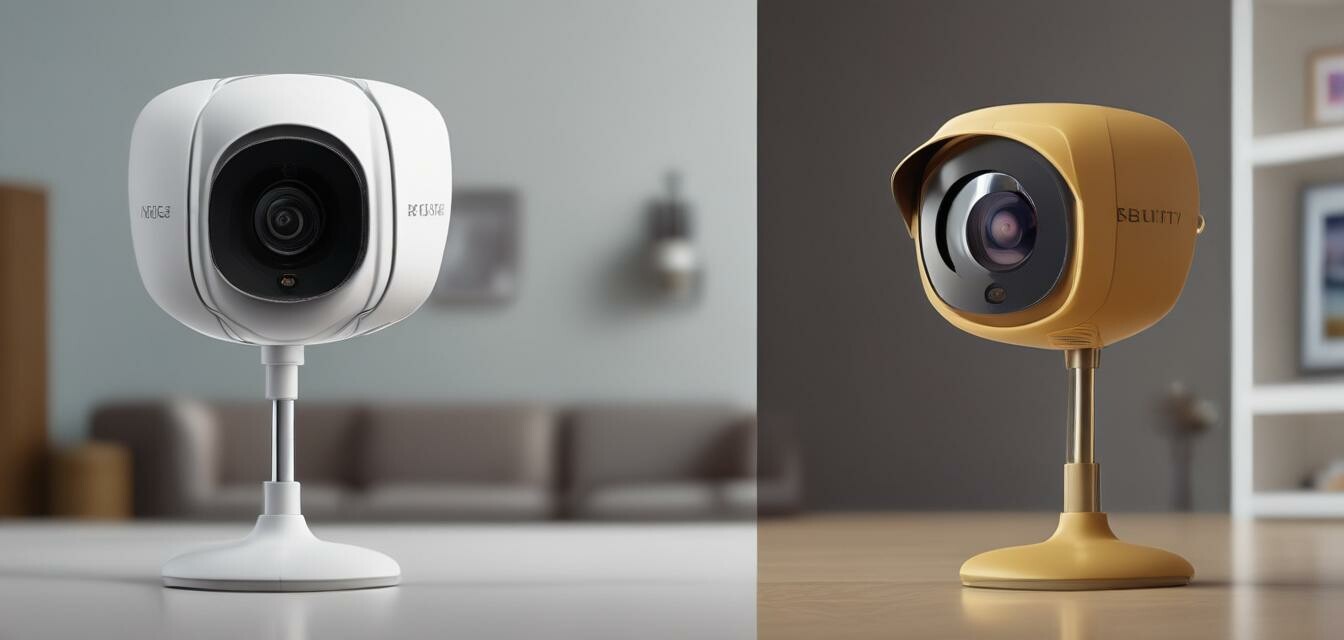
Comparing Wired vs. Wireless Security Cameras
Key Takeaways
- Wired security cameras provide stable connections and uninterrupted video feeds.
- Wireless security cameras offer flexibility in installation and mobility.
- Consider installation costs, features, and your specific needs when choosing a camera.
Choosing the right security camera is crucial for protecting your home and loved ones. With the emergence of various technologies, understanding the differences between wired and wireless security cameras can help you make an informed decision. In this guide, we will explore the pros and cons of each type, their installation processes, and other important factors to consider while shopping for a security system.
Why home security matters
Ensuring the safety of your home is something every homeowner prioritizes. With rising crime rates, investing in a robust security system is essential. Security cameras play a vital role in deterring potential intruders and providing peace of mind.
Wired security cameras
Wired security cameras are directly connected to your internet and power supply. Here are some of their features:
Pros
- Stable and reliable connection.
- Higher video quality and clarity.
- Less susceptible to hacking.
- Can support more cameras on a single system.
Cons
- More complex installation processes.
- Limited flexibility in camera placement.
- Requires running cables through walls or ceilings.
Installation of wired cameras
Installing wired security cameras usually requires more time and effort. The key steps include:
- Plan the camera locations.
- Run the cables from each camera to the recording device.
- Connect the cameras to the power source.
- Ensure connections are secure and test the system.
Wireless security cameras
Wireless security cameras use Wi-Fi to transmit video footage and require only power sources. Here are some prominent features:
Pros
- Easy and quick installation.
- Flexible positioning and mobility.
- Remote access through mobile apps.
Cons
- Dependent on Wi-Fi signal strength.
- Potential for hacking if not properly secured.
- May require battery replacements for outdoor use.
Installation of wireless cameras
The installation of wireless cameras tends to be straightforward:
- Select camera locations according to Wi-Fi coverage.
- Mount the cameras and connect them to the power source.
- Sync the cameras with your home network.
- Test the cameras using the corresponding app.
Comparing Wired and Wireless Security Cameras
Now let's look at a quick comparison of wired and wireless security cameras based on various features:
| Feature | Wired Security Cameras | Wireless Security Cameras |
|---|---|---|
| Installation | Complex, requires professional help | Easy, mostly DIY |
| Video Quality | High, stable connection | Variable, dependent on Wi-Fi strength |
| Flexibility | Limited, fixed position | High, can be relocated easily |
| Security | Less vulnerable to hacking | More vulnerable without proper security |
| Maintenance | Lower, primarily cable-focused | Higher, battery replacements needed |
Choosing the right option for your home
Your choice between wired and wireless security cameras will depend on several factors:
- Budget: Consider installation and maintenance costs.
- Location: Assess where you wish to install the cameras.
- Home layout: Evaluate your home’s design and the feasibility of wiring.
- Desired features: Look for specific functionalities like night vision or smart alerts.
Conclusion
Both wired and wireless security cameras come with their own set of advantages and disadvantages. Understanding these factors will guide you towards making the best decision tailored to your home security needs. For more detailed guidance, be sure to check our comprehensive home security buying guides'; ?>.
Tips for getting the most out of your security camera system
- Install cameras at high points for better visibility.
- Regularly check camera functionality and clean lenses.
- Ensure secure passwords and network settings to protect against unauthorized access.
- Use weatherproof cameras for outdoor installations.
